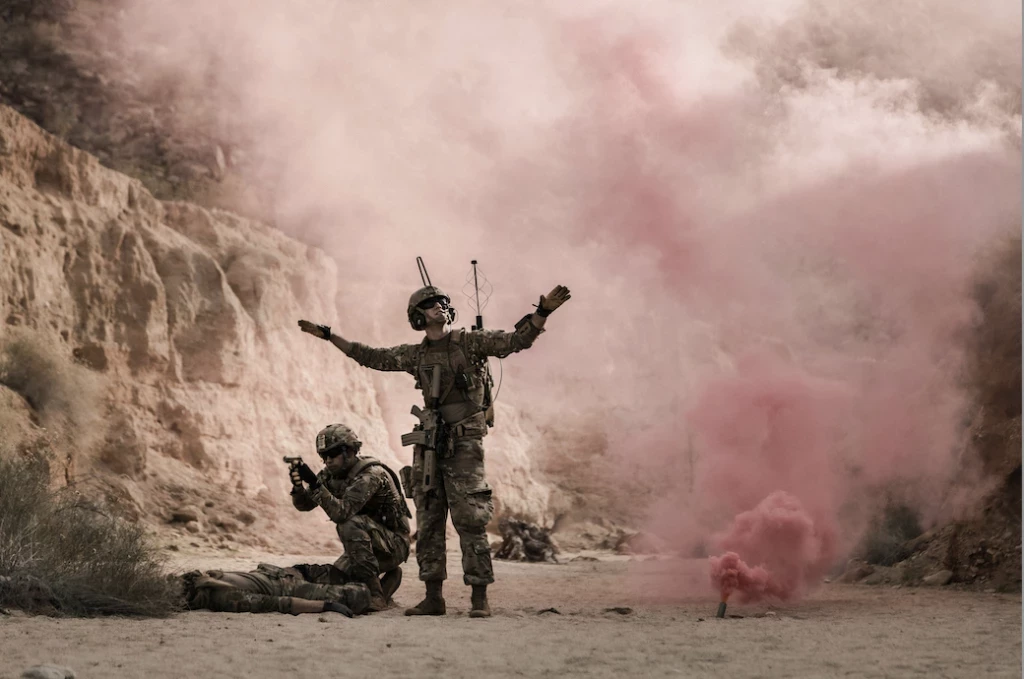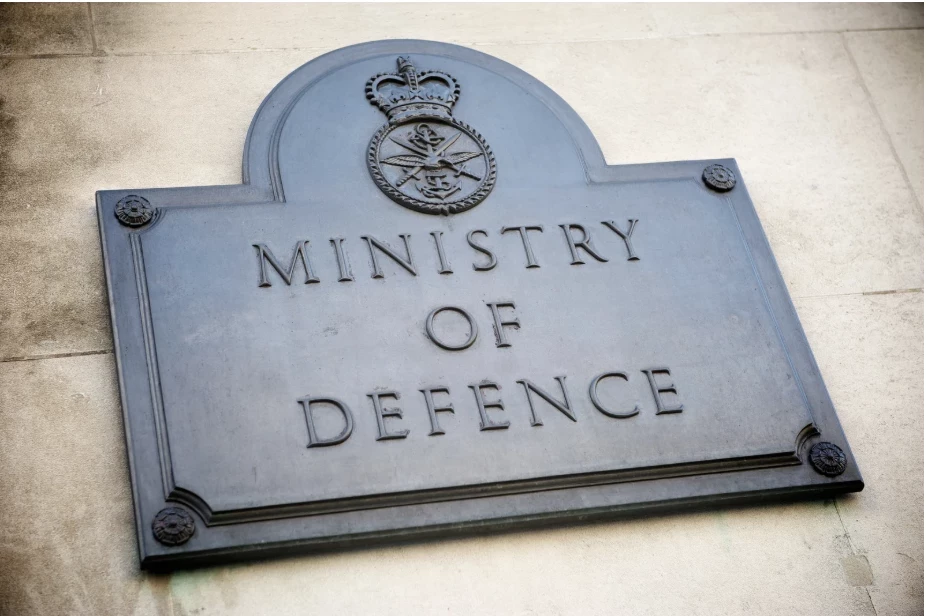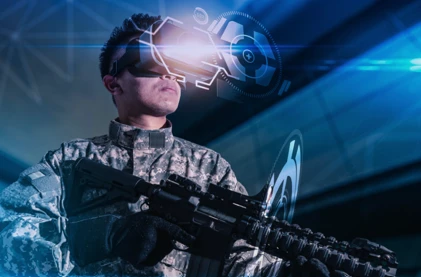Modernising land forces training to counter near-peer threats
Simulated training is key for re-validating high end combined arms kinetic skills, such as brigade level manoeuvre, and non-kinetic skills such as cyber warfare
Add bookmarkWhy do we need simulated training?
The US National Defence strategy signalled a shift in focus away from counter-terrorism towards near peer competition. To achieve this, the US is bolstering conventional military strength capabilities such as nuclear ballistic missiles, increased naval projection and ground force modernisation.
In the current environment, simulation technologies have become essential for meeting optimal force readiness.
For example, the US is embarking on the Synthetic Training Environment, which aims to provide a collective multi-echelon training environment. Meanwhile, the UK is undertaking the Collective Training Transformation Programme, which is the British Army’s large-scale method of moving towards a Future Collective Training System.
Want to learn more about the future of training and simulation?
Future Training And Simulation For Military And Security [Online Event]
A military force must, at a bare minimum, meet the demands of the mission at hand. In this dynamic environment, military planners must determine the makeup of a force composition and their threshold for readiness. Core readiness variables include personnel, equipment, logistics and training.
Core benefits of virtual training in the current operational environment
Virtual training is convenient, safe and cost effective.
In consideration of arms and equipment, virtual training is safer as military personal and equipment are not exposed to significant risks.
It is cost effective. When you consider deploying large-scale forces around the world for live exercises, you’re spending humongous amounts of defence expenditure. In circumstances when this isn’t necessary, virtual training may be better.
Read: Virtual Reality For Defence Less About ‘Reality’ Than Results
Geopolitical implications are another consideration, as there is significantly diminished scope for strategic miscalculation and escalation. When the US and its allies engage in live military exercises, it raises threat perceptions of competitors, as with Operation Golden Eagle – annual training with the South Koreans and the Trident Juncture.
Air assault operations during Operation Golden Eagle
Although virtual training has its benefits, it is not a substitute for live training. It is unlikley to ever be completely replaced as you need to validate the iterations of virtual training that you take to approve the virtual capabilities. In addition, the confidence of troops will be diminished if they rarely use equipment for actual training purposes. There are also certain skills that cannot be captured in virtual training.
Virtual training kinetic skill sets
Use of virtual training is vital for increasing proficiencies in hard tactical skills such as anti-tank weapon systems, close air support, mortars, artillery, main battle tanks and more. This allows troops to practise perishable skills without having to request armaments and munitions, reducing the impact on civilian populations and the environment.
This is a particular sticking point for some European militaries, as it is difficult to train sometimes due to the density of civilian populations and noise pollution. This can be worked around with virtual training.
Simulated training can offset real-world challenges
The availability of munitions or equipment for live training has been an issue in many recent high-profile cases. In 2018, the US air force was straining under the availability of air-dropped munitions for training uses. The strain was due to real world engagements against ISIS and Afghanistan.
Read: VBS: The Future Of Simulated Training
Another example is the German Bundeswehr, which has been lacking in equipment for some time. According to Bundestag military commissioner Hans-Peter Bartels, training programmes and readiness are suffering as a result.
In both instances, increased virtual training can offset real-world challenges - and with the Bundeswehr, virtual training can provide a short-term solution to a longer-term problem.
Training in the Bundeswehr is suffering due to insufficient functional assets. Source: Shutterstock
Increased experimentation and adaption
With virtual training, there is also the benefit of experimentation and adaptation of current doctrines and tactics through repeated iterations with different variables in place.
A platoon-level live-fire exercise, for example, enables you to manoeuvre forces for evaluation. However, a virtual environment allows service members to experiment and change tactics as the stakes are not as severe.
Read: Bisim On How Simulated Training Is Shaping Future Soldiers
Experimentation also extends to the macro-level. Regarding strategy, the use of virtual training not only allows the use of multiple iterations of a scenario with different variables, but you can also easily capture analysis and action reviews.
One of the biggest issues with live operation training is analysis, as trying to merge the results of what everyone observes has inherent difficulties, such as turning that information into actionable data. In a virtual environment, all results and data are automatically and accurately captured for analysis.
Lastly, in real world exercises, there is more scope for adversaries to expose and attack efforts and capabilities. For example, during Trident Juncture, NATO stated that the Russian military was repeatedly committing cyber attacks and jamming attempts against global positioning system's capabilities and against deployed forces.
Non-kinetic skill set
Cyber offence and defence simulated training allow the practice of defence and attack on critical cyber infrastructure. This is especially important in today's environment, as global competitors are increasingly conducting cyber capabilities, mostly in SCADA attacks against energy and transportation infrastructures.
Cybersecurity and virtual training. Source: Shutterstock
Anything that the West can do in the virtual environment to enable greater abilities against such attacks is of great importance. Likewise, virtual training enables the ability to perform multiple iterations of an attack to identify vulnerabilities in both internal systems and adversary systems.
Read: Swedish Army Training Acquisitions: Manpack 300 Systems
In a virtual environment, cyber teams are better able to protect their methods and tools. For example, the STUXNET malware that got into the SCADA systems, as was the case with the attack against Iran's nuclear facilities, was compromised immediately after it was used.
If you run cyber exercises in a non-virtual environment, there is also the possibility of escalation on part of the adversary if an attack gets out of hands and spreads to other system. Generally speaking, there is an array of unintended consequences that need to be considered when committing to cyber attacks.
Likewise, the narrative and the ability to influence populations can be used. An example of this is the US Jade Helm excersise in which a war game was designed to simulate a hostile attack. As it was performed in the real world, the infringment on civil liberties was a topic of discussion. This narrative was also pushed by the Russian government.
The major challenge with virtual training in cyber is that our allies have a good understanding of internal systems but not an understanding of adversary systems. Training for cyber requires realistic models of adversary systems to be successful.
Read: Inside The Israeli Air Force Mission Training Center
It is important to have models that understand age, sex, political affiliation and more. Assuming the models are good, the use of virtual training for information operations can be valuable to identify second and third-order effects, such as delivery methods and reaching the audience for intended impact. It's easier to operate from an existing product rather than building something from scratch in a real conflict.
What do the experts say?
Doug Livermore, Contracted Advisor in the Office of the Assistant Secretary of Defense for Special Operations and Low-Intensity Conflict:
Because of the recent shift from counter terrorism to near peer adversaries, there are many capability gaps regarding high end kinetic skills, such as infantry, battalion and brigade manoeuvre and armoured combined fire. In the US we’re taking steps in fixing these gaps, but we are moving from 19 years of counter-insurgency operations which require different skillets.
That is why virtual training is exciting, because we don’t have the training grounds or the equipment always available to address training gaps. In terms of future priorities, our energy and resources will be expended on re-validating high end combined arms kinetic skills.
In addition, the conversation we have been having about competition below the threshold of violence needs an established doctrine, such as cyber. We have been focused on cyber defence, but there will be new doctrine developed and trained around cyber offence.
Finally there is information operation. Amongst us allies, we face significant challenges from a civil liberties perspective, but this is mitgated through a virtual environment as it is isolated away from civilian populations.
Brig. Gen. Amnon Ein-Dar, Head of Training & Doctrine Division:
"Aviation is dangerous and expensive and putting work into the field of simulators and increasing the scope of the force's simulative training is the direction we're headed in. Advanced technology and high-quality personnel will help us get very far."
Major General Engelbrektson:
In the future, different systems should support trainers with evaluation data analysed by the systems themselves. This means that evaluation results become more objective and more accurate and not influenced by human emotions.
"The Manpack 300 training system gives the opportunity for all army units to train locally with an ability to evaluate the result of current training"
In the future, different domains will be able to transfer data between them automatically. This will mean that simulated training will be directly linked to live training. There will be advantages when simulated units and live units and its systems can be included in the same exercise.
Future systems must always have the same functionality as the real system, as units will achieve true to life capabilities. Efeectivly ‘train as you fight – fight as you train!’ Tomorrow's systems must have built in ability to be updated and modified to be able to handle changes such as new ammunition and different adversaries - enemy with new systems.
Tal Levy, Senior Director, Fighter & Rotary Training Solutions, Elbit System:
The Current combat scenarios are very complicated, with many aircraft and weapon systems in the air and on the ground. This brought us to create the highest level of simulation in the MTC. In addition, this unique simulator enables the ability to simulate scenarios that are not possible in real flying."
Peter Morrison, Co-CEO, Bohemia Interactive Simulations:
We actually have the technology to do multi-nation wargames right now. It’s not going to be a technology problem that stops it. It’s going to be a policy, a security problem.
VBS STE would be perfectly suited to multi-nation wargames. It’s up to respective militaries to solve their policy issues to implement it. There might be issues with bandwidth as well, as this scenario would involve transferring huge amounts of terrain data, communications data, and not to mention the number of entities that would be involved in a multi-nation scenario.
Martin Kolombo, Product Development Lead, Bohemia Interactive Simulations
The big thing in the coming year, definitely for us, will be scale, with our company focusing on planet-wide simulation, after planet-wide rendering. That will be the big involvement for us, of taking the scale from VBS3, where we could do a few hundred, perhaps a few thousand, entities, to millions. And increasing that scale while keeping the same fidelity, and the scale doesn’t increase just on the count of entities but also on a geographical level, so you can have a scenario that happens in New York simultaneously as in the Middle East.


























